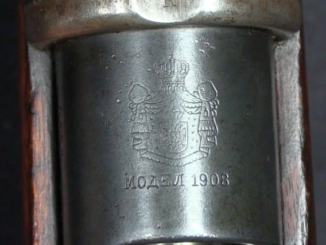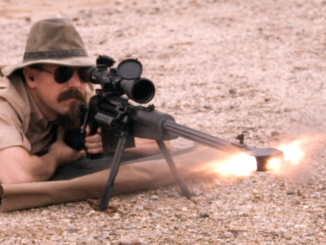Serbia, as one of the minor powers of World War One, if usually overlooked by history books – and is especially overlooked by firearms reference books. Want to know about the M1899/07 Mauser rifles? The Koka-Djuric M1880/07 conversion of single shot 10.15mm black powder rifles to magazine-fed 7x57mm repeaters? Well, good luck! Until now, anyway.
Branislav Stankovic and John Sheehan have worked together to product the first of a planned 3-volume set of books on Serbian arms of the First World War. Volume One here covers rifles, bayonets, and ammunition, and is the only English-language reference that I am aware of which provides any substantial level of detail on the progression of Serbian small arms in specific.
Serbia was a small country, and lacked any substantial domestic arms production industry before WW1. As a result, it sourced its small arms from foreign factories, but was always interested in tinkering with them to get the optimal designs. For instance, their development and insistence on the 10.15x63mm cartridge in their single-shot Mauser rifles, instead of the standard German 11mm Mauser cartridge. They were also one of few European countries to recognize the value of the 7x57mm cartridge and adopt it.
Unfortunately, all of this planning would become moot in late 1915, when the Serbian Army suffered strategic defeat and was forced to retreat across the mountains to the Albanian coast for evacuation, losing most of their arms along the way. The Army would regroup and prepare for a new campaign, but Serbia had no arms supplies left with which to equip them. France would take the responsibility for equipping the Serbian forces in 1916, and this book covers the Lebels and Berthiers with which Serbia fought in substantial detail. It also covers the capture Austrian Mannlichers and Russian military aid Berdan and Mosin-Nagant rifles in remarkable depth. It would have been much easier to limit the book to only the pre-war Serbian arms, but by including the other weapons used, the authors have substantially increased the usefulness of the work, giving readers a much more complete understanding of Serbian fighting forces during the war.
The book also covers bayonets and ammunition in appropriate depth, and it well organized and well written. To order a copy, either email weaponsofvictorybook@gmail.com for a PayPal invoice or send a cashier’s check or money order for $110 (this covers shipping in the US) to:
John P. Sheehan
P.O. Box 335517
North Las Vegas
Nevada, 89033
While this is an ungainly process, the book is absolutely worth going through it, if you are interested in Serbian armament or a more full understanding of the Great War.




Sweet, I plan on collecting all three volumes — I had plenty of relatives fight in the Serbian army in the First World War…and every other one.
Thanks for the review.
After the retreat the serbian Army was in shortage of nearly everything.
For exemple, the Serbs have saved only 22 75mm field gun and 2 howitzer.
The artillery was entirely re-equipped with french stuff : a mixture of old “de Bange” guns + standard 75mm + non-standard guns (such as 120mm Schneider howitzer).
I guess that providng ammo for both small arms (Berthier, Mosin, Mannlicher, various Mauser)and big guns, was a nightmare.
Jeb
Interesting. I visited the Museum at Zastava in Kragujevac in March, and picked up the booklet Zastava printed up. The booklet and museum are very informative. Well worth the trip; Kragujevac is a 2-hour bus ride from Beograd and is easy to get to.
Great restaurants.